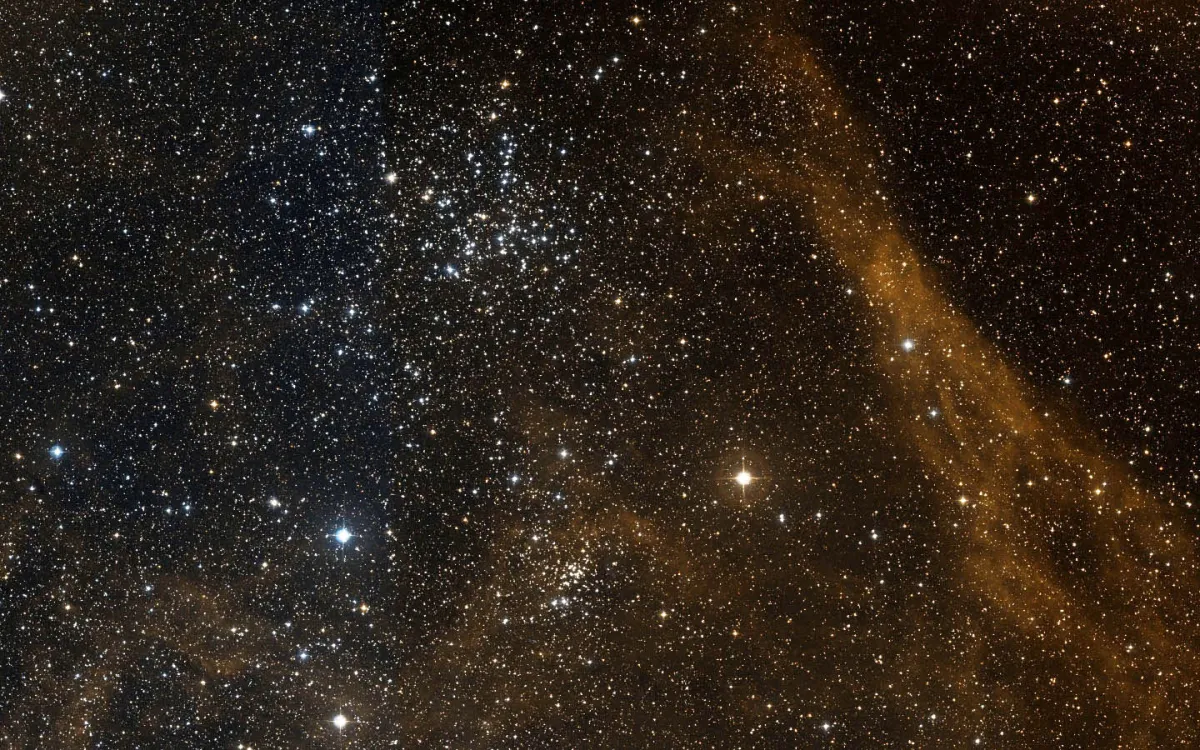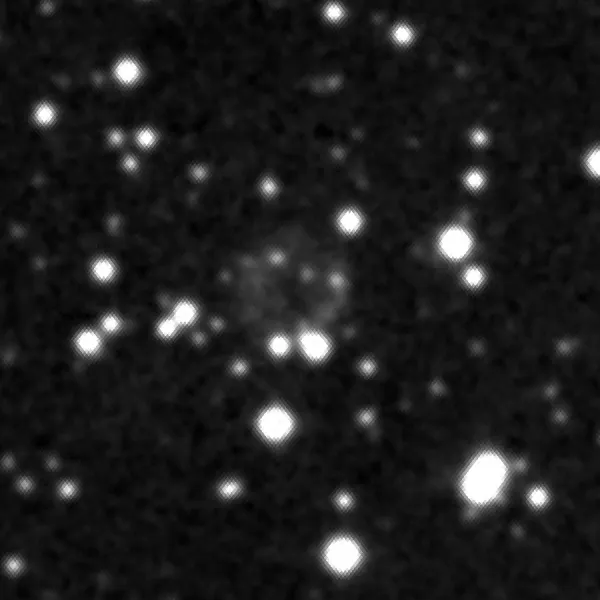M 38, NGC 1907 & Abell 9

Open Cluster M 38
The open star cluster Messier 38 was discovered by Le Gentil in 1749. It is a loose and irregular cluster with a relatively empty centre. The brightest stars form the shape of a crooked cross or the somewhat clumsily written Greek letter π. The diameter is about 21 minutes of arc and the cluster contains well over 100 stars. The distance to M 38 is about 4200 light years, which results in a true diameter of the cluster of around 25 light years. A value that is comparable to that of M 37.
The earliest member stars are giants of the spectral class B5 with an absolute magnitude of around -1.5 mag. The cluster also contains a number of A-type main sequence stars and some G-type giants. The brightest star in the cluster is a yellow G0 giant with a visual magnitude of 7.9 mag, which is about 900 times the luminosity of the sun. The sun at the same distance would appear to us to be about 15.3 magnitudes bright. [4]
| Designation | NGC 1912 |
| Type | OCL (II2r) |
| Right Ascension (J2000.0) | 05h 28m 43.0s |
| Declination (J2000.0) | +35° 51' 18" |
| Diameter | 15 arcmin |
| Visual magnitude | 6.4 mag |
| Metric Distance | 1.066 kpc |
| Dreyer Description | Cl, B, vL, vRi, iF, st L & S |
| Identification, Remarks | GC 1119; M 38; OCL 433 |
Open Cluster NGC 1907
NGC 1907 is a small open star cluster about 35 arc minutes southwest of M 38. John L. E. Dreyer described it as a round, crowded cluster, fairly rich in stars from 9 to 12 magnitudes. [313]
| Designation | NGC 1907 |
| Type | OCL (II1m) |
| Right Ascension (J2000.0) | 05h 28m 04.5s |
| Declination (J2000.0) | +35° 19' 32" |
| Diameter | 5 arcmin |
| Visual magnitude | 8.2 mag |
| Metric Distance | 1.330 kpc |
| Dreyer Description | Cl, pRi, pC, R, st 9…12 |
| Identification, Remarks | WH VII 39; h 354; GC 1114; OCL 434 |
Planetary Nebula Abell 9

Abell 9 is an often overlooked planetary nebula, although it is only about 12 arc minutes north of M 38. At 37 arc seconds, the angular diameter is smaller than that of Jupiter. The photographic brightness is given as 18.9 magnitudes. The central star is 23.5 magnitudes weak. Distances vary from 37'000 to 51'000 light years.
Some are not yet sure whether Abell 9 is really a planetary nebula, because it is listed as a possible PN in the 1992 edition of the Strasbourg-ESO Catalog of Galactic Planetary Nebulae [141]. The post-processed section from the STScI Digitized Sky Survey (Fig. 3) shows a PN-typical appearance. The object is also known under the names VV 31 (Vorontsov-Velyaminov) and ARO 122 (Algonquin Radio Observatory).
The planetary nebula Abell 9 represents a difficult object and lies beyond the range that can be visually recognized by amateur astronomers, but it should represent an interesting test object for CCD images. It can hardly be seen on the DSS section.
Finder Chart
The open star cluster Messier 38 is located in the constellation Auriga and is best visible in the winter months. Connect the two stars θ Aurigae (2.62 mag) and ι Aurigae (2.69 mag). Messier 38 is about halfway between the two stars, slightly inward, so that the smallest Telrad circle comes to lie on the connecting line.
Visual Observation
400 mm Aperture: With the 21 mm Ethos eyepiece, both star clusters M 38 and NGC 1907 fit into the same field of view, offering a beautiful, high-contrast view of a large and small open star cluster. — 400 mm f/4.5 Taurus Dobsonian, Falera, SQM 21.1, 20. 9. 2025, 01:45 MESZ, Bernd Nies
